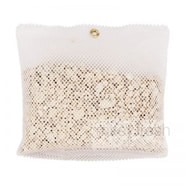Mildew is a type of fungi or mould that can invade your home by growing on your walls, ceiling and floors. It grows on many types of material found in your home such as your carpet, insulation, wallpaper, wood, tiles, windows, curtains and so on.
Wherever it is located in or on, it tends to look dull, grey and ugly.
Mould and mildew grow in moist, dark areas in your home. If the plumbing has experienced a slow leak, maybe too much humidity in the air, dampness on your wall from poor ventilation, condensation on the window from uneven temperatures or even flooding from broken pipes, mildew can start to grow.
Mould initially travels through the air as spores and can easily float into a damp area and land. After it lands on the moist surface, it can start to grow within 48 hours.
What ever colour or how ever small amount is visible, it is also bad for your health. According to USA EPA and Government of Western Australia Department of Health (n.d.) some of the main mould symptoms include:
- Sneezing
- runny and or blocked nose
- unable to stop coughing
- breathing difficulties such as shortness of breath and wheezing
- itchy, watery eyes
- increased number of respiratory tract infections
- hay fever
- sinus headaches
- joint pain
- exacerbation of asthma
- excessive amount of phlegm in throat
- colds and flus that you just can’t seem to get over
- fatigue and lethargy
- and even depression
By removing mildew from your home you will feel better, and feeling better makes you happy!

In excessive situations, hire a dehumidifier to prevent further mould growth and health deterioration, and provides time for you to assess where and what the triggers are.
Less acute situations, place natural Zeolite rocks in the room to absorb moisture and odours.
PRODUCT:
Zeolite- Bag of Rocks
Eliminates moisture, damp and musty smells safely and naturally from any wardrobe or room. Reduce mould, mildew, dampness, condensation, odours.

Move damp items away to assure that the mould does not spread further. To remove mould and mildew stains from surfaces, such as linoleum or tiles, make sure you dry the surface and the surrounding area. Remove anything that the mould can spread to, such as clothing or carpeting.
Mix 80% fermented white vinegar with 20% water and apply to the stain with a spray bottle, leave for 15 minutes before cleaning away. Be sure to rinse thoroughly. The stain may at times be too set, but with the mixture, the mould spores may be dead however the mycotoxins continue to be an adverse health issue.
Mould removal from carpeting can be a bit trickier. First, you should try drying the carpet as quickly and effectively as possible. If you’re able to move it, place it outside in the sun to dry, front and back. If you can’t move the carpet, run some blow heaters near it to dry out the moisture. If beyond 48 hours, roll up and dispose of carpet.
Once the carpet is dry, vacuum to remove any loose dust to avoid potential mould spores. This will prevent them from spreading further. Apply the fermented white vinegar mixture to the dry surface.
Ventilate, ventilate, ventilate.
Towards healthier living, Carol Parr ♥
As Building Biologists, we have acquired knowledge of adverse health effects and recommend effective strategies to reduce occupants’ exposure by eliminating and controlling as many sources of pollutants in order to create healthy indoor living environments that are as exposure-free and natural as practically possible.
Resources
Government Of Western Australia Department of Health, Mould and Condensation in Your Home, [Online], 19 May, 2010 http://www.public.health.wa.gov.au/cproot/2887/2/Mould%20Fact%20Sheet.pdf [11 December, 2012]
United States Environment Protection Agency 2010, Effects of Air Pollutants – Health Effects, (Online), Available: http://www.epa.gov/apti/course422/ap7a.html [4 October, 2012]
Author
-
We’re glad you’re here. We’re Carol and Tony, founders of one of the longest running Healthy Home Blogs in the world, Mitey Fresh Australia. We’ve been on this journey for the last 25 years and are passionate about helping families sift through health hazards and triggers like allergens, mould, water damage, chemicals and EMFs, to get clarity about what’s toxic and what’s not so they can create a healthy and happy home for their family they love. Each month, people visit this blog seeking focus on the health and wellbeing of their loved ones, sustainable and effective practice tips and guides, to help create and manage healthier indoor spaces, improve the built environment that is pleasing to the senses and support healthy living and nature, every day. Starting this blog was to help change people’s lives, one family at a time, and we can’t wait to share how its allowed us to stand next to you and show you how interpreting these synergies between buildings and the environment they are built in will impact upon the health and well-being of those who occupy them. Find out more about Healthy Homes and what this blog can do for you!





